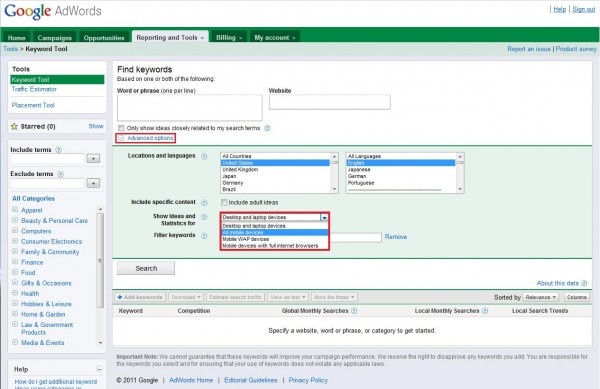Preparing Your Search Program For Mobile In 2012
Between the rise of tablets and the continued proliferation of smartphones, 2012 is looking more and more like the year of mobile for search marketers. Neilsen reports the number of smartphone subscribers accessing the Internet on their phones has grown 45 percent since 2010 with the majority of 18 to 34 year-olds owning a smartphone. […]
Between the rise of tablets and the continued proliferation of smartphones, 2012 is looking more and more like the year of mobile for search marketers. Neilsen reports the number of smartphone subscribers accessing the Internet on their phones has grown 45 percent since 2010 with the majority of 18 to 34 year-olds owning a smartphone.
Similarly, Google recently found 79 percent of smartphone owners use their devices to compare prices, research products or services, and locate retailers. Mobile devices, it seems, are a shopper’s best friend.
There’s certainly no shortage of tips and advice when it comes to running mobile marketing campaigns. However, for marketers new to the game in 2012 and for those looking to do a sanity check on their mobile advertising efforts, I thought I’d share some insights on developing a mobile marketing strategy from the ground up.
Assess Mobile Presence
First off, you want to determine how much of a presence you already have among smartphone and tablet users. Doing so will not only aid you in deciding how much effort to put into mobile, but it will also provide you with a baseline for comparison once your mobile strategy is up and running. Assessing your mobile presence consists of two steps:
- Estimate your mobile search volume. This can be done by measuring the number of search queries your current keywords generate from mobile devices on a monthly basis. The “Advanced Options and Filters” within the Google Keyword Tool allows you to do this.
- Find out how much of your current traffic originates from mobile devices. This can be a bit trickier if you’re starting from scratch with mobile. It’s done by targeting both mobile and desktops with the same campaigns during a test period. Once the test period is complete, through the “Segment” option in AdWords you can segment your campaign data by device type and compare.
Allocate Assets
The level of mobile search volume and site traffic you have should provide you with a good gauge as to how much priority and budget to put into your mobile strategy.
Mobile is estimated to comprise between 15 and 17 percent of all SEM traffic for the finance, automotive, tech, travel and entertainment verticals. These sectors generally have a healthy mobile presence; so, if your traffic is within the same range you may want to accelerate your efforts.
Account Structure
Mobile is not the same as desktop. Consequently, when implementing your mobile strategy you’ll want to separate campaigns by device type and have specific campaigns for mobile and tablet users.
Segregating by device provides you more visibility into performance and greater control, particularly when it comes to budgeting, keyword bidding, ad copy optimization, and landing page optimization (you should at the very least have separate landing pages for mobile).
Building Campaigns With Mobile In Mind

Consequently, search queries often contain more local information, such as zip codes and city names.
Since users are routinely in transit, marketers should also tailor ad content accordingly and consider using a call-to-action, such as coupons or quotes sent to their phone.
You’ll also want to consider advanced features like click-to-call or click-to-download.
Bidding In A Mobile World
The limited real-estate on phones and tablets makes the position of paid search ads all the more important.
Google searches on mobile devices return only five ads, two of which appear above the organic results. As a result, you’ll want to consider bidding important keywords to position one or two.
Many SEM management tools allow you to set up alerts to notify you when your position drops so you can react accordingly.
Since mobile traffic converts differently than desktop traffic, keywords targeted to ROI or cost per lead (CPL) goals should have separate performance goals based on historical conversion rate and value per conversion.
At this point, with mobile on the rise it shouldn’t be a question of whether or not to develop a mobile strategy but how much effort and resources to devote to your mobile campaigns. By setting up your campaigns as outlined above you’ll be in position to scale as your mobile search budget grows.
Opinions expressed in this article are those of the guest author and not necessarily Search Engine Land. Staff authors are listed here.
Related stories
New on Search Engine Land
